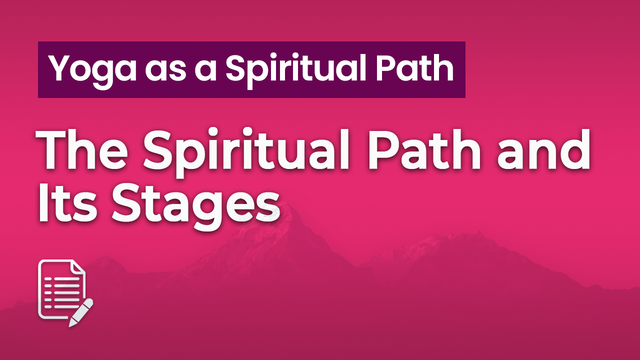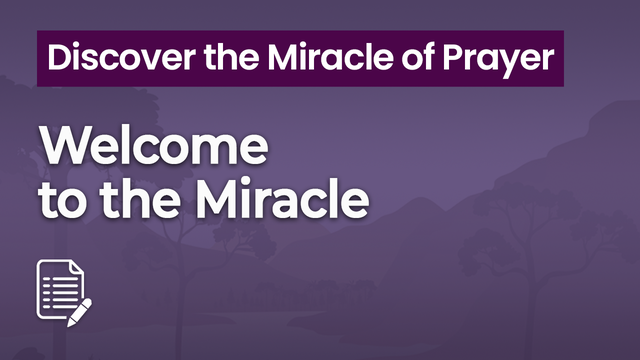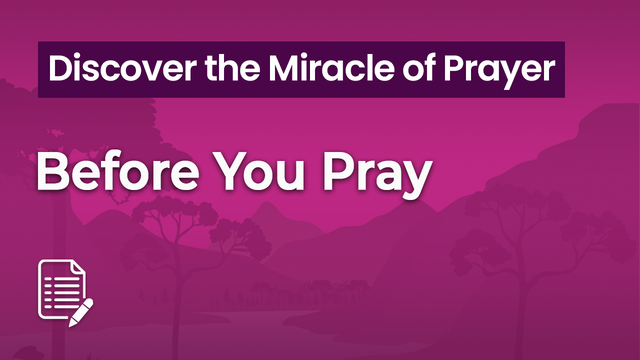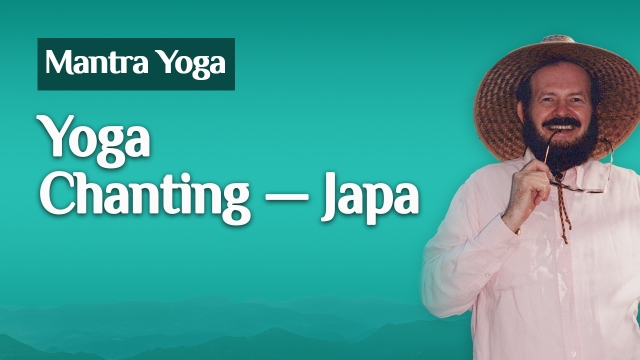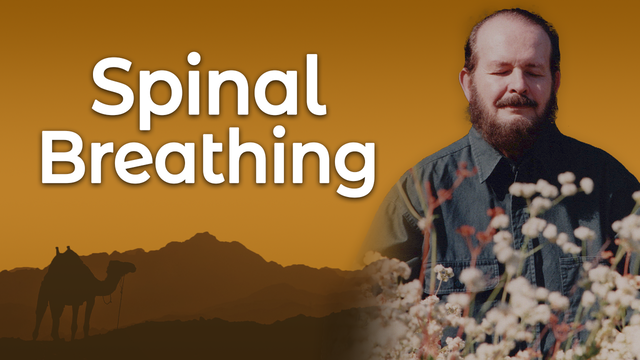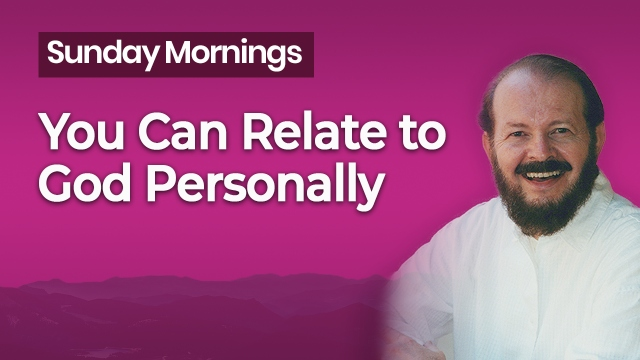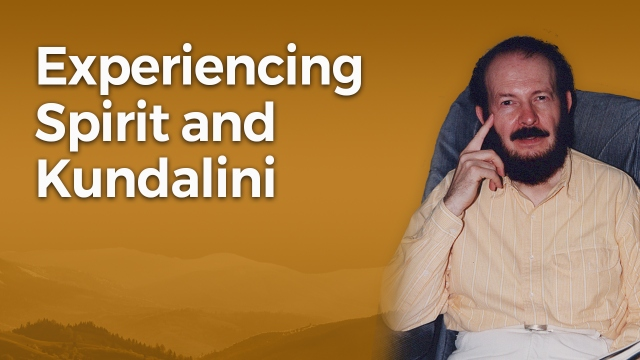
Ramakrishna Ananda
The Main Yogas — Part 2
Explore how different kinds of yoga can help you experience deep serenity
Mantra Yoga
Mantras (or mantrams) are words, phrases, or syllables which are chanted thoughtfully and with growing attention. Mantra yoga meditation involves chanting a word or phrase until the mind and emotions are transcended and the superconscious is clearly revealed and experienced.
Since the mind wanders so much, the music of a mantra easily rescues the mind and brings it back to the object of one’s meditation. Both the rhythm of it and the meaning of it combine to guide the mind safely back to the point of meditation — the higher consciousness or the specific spiritual focus.
Typical mantrams are: Aum, meaning Spirit, the Word of God, which creates, preserves, and transforms; or the Tibetan Buddhist mantram Aum Mani Padme Hum which usually is translated as “Om the jewel is in the Lotus Hum;” or the Hindu mantram Asato Ma Sat Gamayo which means “Lead me from the unreal to the Real.” (Or, more fully, “Lead me from attachment to the unreal into the Real.)
There are thousands of mantrams which are mainly from the ancient Sanskrit language. Possibly, in time, mantrams will be in English as well as Sanskrit. What such a development would require is a number of great meditators of modern day to be so attuned to the Lord and so at ease within the realms of higher consciousness that these new mantrams can easily be revealed to them. All mantrams are the result of a revelation, usually to some deeply meditating adept.
Generally mantram meditation involves chanting out loud at first until the body is calm and the atmosphere around oneself is serene and pleasant for meditation. Then whisper meditation almost automatically occurs and the life force begins to withdraw inward from “out-loud” chanting to whisper chanting. In whisper chanting the prana, the life force in the body, is balanced and harmonized, preparing the way for a deeper state of serenity — and of the balance of mind and emotions.
Whisper chanting easily dissolves and the life force moves even deeper within as you enter mental chanting. Mental chanting is practiced as long as thoughts are occurring to the mind. Whenever the mind is distracted, the mantram is simply chanted in the same area of the mind that the distraction is occurring. The mantram always wins if given a chance.
As the mantram frees you from one thought, then another, and also helps to dissolve distractions, the mantram then begins to reach the border of superconsciousness. Chanting becomes effortless. No effort, nor warding off distractions, is needed. Chanting becomes a pleasure. Peace and gentle joy fill your mind.
At this point of effortless mental chanting the mantram can do two things: a) it may dissolve into superconsciousness, or b) it may first help ventilate the subconscious mind, the storage house of your old thoughts, feelings, and memories which have been sadly neglected or not successfully dealt with. The mantram may create an opportunity for old thoughts and feelings, old fears and guilts, to be released, or healed, or let go.
What happens next? If your mental chanting first becomes effortless and ventilates the subconscious pressures, it then moves into your superconscious self. Or. the effortless chanting bypasses the subconscious basement of your mind, going directly into sublime superconsciousness. Either way, you arrive in your ecstatic, heavenly nature. The words of the mantram fall apart and fall away. Only the energy surge of the mantram remains as your awareness becomes blissful and full of light.
In this ecstatic stage of continuous rapture, you feel that you have arrived home. You sense that this is your true nature — and your true estate, which has been ignored due to the dominance of the mind, the emotions, and the outer world.
You will likely have a very pleasant fifteen to twenty minutes in the delight and comfort of your superconscious self; and then the mantram will begin to come out. You will find your higher consciousness wants to come back to the outer world. It wants to express, to touch your life and loved ones. The words of the mantram re-emerge in the mind and you reverse the whole process, going gradually into whisper — and then out loud — chanting.
Ultimately a mantram meditator lives in the ecstasy of the mantram, always aglow with the meaning and spiritual insight of the special syllables.
In order to be sure a mantram is right for you, seek a mantram only from a Guru or Master who is qualified to teach and initiate you.
Laya Yoga
While you need a teacher to help you learn any form of meditation well, you particularly need the aid of a teacher to learn laya yoga meditation. There are five main energy centers in your spine and two in your head. The laya yoga meditator knows exactly how to locate these centers through the kind training of a teacher. When these centers are found, they function very much like doorways to different realms of higher consciousness.
Through laya yoga meditation, for example, you sense the heart center which is located inside the spine, directly back of the heart. From this point you can expand your awareness and enter into a realm of great, sky blue light (sometimes other colors as well) and discover how easily and readily you can love. Through laya yoga meditation in the heart center you overcome selfishness and self- centeredness. You become able to deal with your fears and worries because of the tremendous strength and insight you gain from the “heart expansion.”
The five centers correspond roughly to the main areas of the spine. One is located in the area of the tailbone. The second center is in the area of the sacrum. The third is located in the spinal cord, back of the navel. Then the heart center, which we have mentioned. The throat center is found inside the spine at the base of the neck, directly back of your collar button.
The first head center is the point half an inch above where your eyebrows meet in your forehead — it’s called the third eye. The second head center is at the crown of your head. Technically, this area is not a center at all, but is considered the main source of spiritual light and energy which is expressed throughout the body.
While it is beneficial to sense where your centers are, it is not wise to concentrate on these centers or meditate on any of them without the help of a teacher. Over-stimulation of a center could cause pain, confusion, or intense desires.
On the other hand, most people live on only three levels of consciousness — the material, sensual, and egoic — without ever opening the seven centers which bring higher consciousness. Laya yoga, with a qualified teacher, is an extremely worthwhile endeavor.
Tantra Yoga
The word tantra literally means “expansion.” A tantra yogi concentrates on expanding all levels of his or her consciousness to unveil and realize the Supreme Reality. Tantra focuses on the dynamic aspect of divinity called Shakti, or “the Cosmic Mother.”
The tantric devotee strives to attune with the spiritual dynamic energy in order to transform personal limitations and release subconscious blockages.
True tantra yoga is a pure path, but it has been abused by some self-proclaimed adherents. Tantra yoga is not concerned with sexuality, but with the creative force and transmuting this energy into higher channels. Sometimes self-styled teachers have misconstrued the symbolism of tantra yoga into sex practices for men and women.
Rather, the goal of tantra yoga is to awaken and harmonize the male and female aspects within each person in order to spiritually awaken and realize the whole universe as an expression of the Cosmic Mother, the divine life force, or Spirit.
Tantra yoga meditation is often practiced this way: A tantra devotee sits calmly and purifies mind and heart of wayward thoughts and desires. The devotee then senses the life force within his or her being and gradually, through imagination and feeling, directs the life force to rise up the spine, from the tailbone into the neck and then into the forehead.
When considerable life force is gathered in the forehead, the tantra yogi, through practice, directs that the life force move out from the forehead and form a body of light and energy three to six feet before him or her.
The body of light in front of the devotee is encouraged to become dense and expand until it is as large as a human form.
The tantric yogi then directs love and devotion toward the dynamic body of light which is a profound representation of his or her soul and essence.
Usually, after fifteen to thirty minutes of this meditation, the yogi invites the light and energy to slowly return into his forehead and down through the body to the base of the spine.
Through practice, amazing renewal is felt through tantric meditation and spiritual awakening is accelerated. The tantric becomes aware that the life force and essence within each person is truly divine; it is from the Lord. The spirit in each one is from God.
Another interesting aspect of tantra yoga is its dedication to transmutation of negative habits or obsessions — smoking, drinking, and overeating, for example. Of course, the tantric would urge you give up any bad habits you can by simply dropping them. However, if you can’t give up a self-destructive behavior, no matter how hard you’ve tried, why not use a tantric approach to it?
The beginning tantric realizes he has failed in giving up his self-destructive habits because they were so strongly established over long periods of time. Often, before taking up tantra yoga, he tried to stop hurting himself through smoking, drinking, and overeating, but failed miserably after many struggles. Now, through tantra he tries to expand his consciousness as he transforms old habits.
If drinking is his problem, for example, he thinks of God as he drinks! Rather than ignoring God or feeling rebellious, he strives to sense God’s love, joy, and blessings. The tantric strives to feel God’s joy or love filling him, as well as the intoxication of the alcohol. In a short time, the tantric beginner does not need to drink. The thought of God fills him with joy instead.
Similarly, the smoker strives to sense God’s presence in the satisfaction of smoking. In time, provided deep love of God is cultivated, the cigarette or pipe is not needed in order to feel pleasure and contentment.
Overeaters use similar principles. Gradually, their satisfaction is in God — not food. Overeaters also do these tantric practices:
- As they eat, they strive to realize the food is an expression of the infinite spirit; that they are spiritual beings partaking of spirit. This awareness of the food liberates them from a desperate animal approach to mealtimes and snacks.
- Sometimes they mix all the foods on their plate into one homogeneous mass which doesn’t look so appealing to the eyes and the mind. Freed of visual allure, the food is simply conceived as energy, a few hours fuel.
True tantric yogis think of God all their waking hours. In this devotion they are freed from destructive habits and enter enlightenment.
Hatha Yoga
Hatha yoga, in the twentieth century, is mainly practiced for health and vitality. It’s a marvelous means of exercising, stretching, and freeing the body so it can be a healthy, long-lived, and vital instrument of the mind and soul. In addition, hatha yogis can become extremely clear-minded and can concentrate well. However, a few yogis do practice hatha yoga as their main method for spiritual realization. Their clear minds and pure, healthy bodies enable them to meditate easily.
In Sanskrit, ha means sun, tha means moon. Hatha yoga is the practice of harmonizing the body’s inner currents (principally the currents of Feeling, Thinking, Willing, and Acting) until they are in perfect balance. Normally the hatha yogi with the calm mind focuses awareness at the ajna center half an inch above where the eyebrows join and directs awareness to move through that center into a superconscious state. The individual life, the finite life, meets and fuses temporarily, at first, with the infinite life.
Hatha yoga meditation is not well-known today and the purity of life required in order to do hatha yoga meditation well requires more time and application than most people are willing to give. However, those few dedicated men and women who are true hatha yogis live in abundant well being and universal harmony.
These are the eight main yogas: Bhakti, Karma, Jnana, Raja, Mantra, Laya, Tantra, and Hatha. In the event you have heard of Kundalini and Kriya yogas, we’ll explore them briefly, too.
Kundalini Yoga
Kundalini yoga is sometimes considered a distinct yoga although it generally involves a combination of raja, hatha, tantra, laya, and mantra yogas. Its principal goal is the stimulation of the spiritual life force at the base of the spine (called Kundalini) so that it will rise easily from the lower centers of your being into the spiritual centers in your head where higher consciousness is perceived, experienced and. ultimately, lived in.
Kriya Yoga
Classically, kriya yoga is a blend of raja, jnana, and bhakti practices. The word kriya means “to do, to make an effort,” or “to transform.” One of the main ways that kriya is practiced is a daily program of self-discipline of mind and body, introspection, and devotion to God.
Another way that kriya yoga is practiced in the world today is in directing life force to move up and down the spine, transforming the meditator’s state of being until spiritual realization occurs. This technique is usually conveyed privately through initiation from a Guru or longtime practitioner of this method.
Both forms of kriya are deeply related and very ancient — well over five thousand years old and probably much older. Several million people practice both forms of kriya yoga throughout the world today.
— Ramakrishna Ananda
